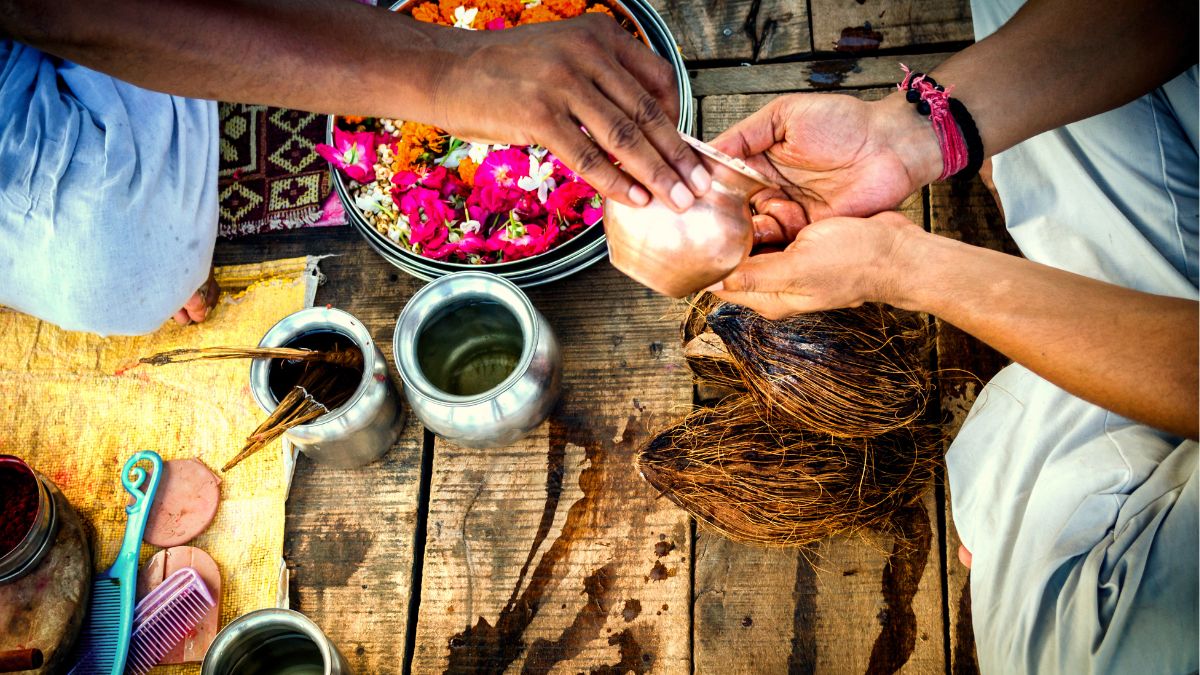A 16-day lunar period known as Pitru Paksha is when Hindus honor their ancestors. This is done by offering them food, water, clothes and a small pooja. It is also popularly known as the Shradh period. From meaning, significance, and dates, here is everything you should know about Pitru Paksha 2023.
Pitru Paksha 2023: Significance, Date & More
It lasts from the full moon of Bhadrapada month to the new moon day of Ashwin month and is referred to as Shradh Paksha. This year, Pitru Paksha will begin on Friday, September 29, 2023, and go through Saturday, October 14, 2023.
According to a legend, when Kunti’s first child, Karna, passed away, he was taken to heaven. He was offered money and priceless gems. However, Karna told Indra that he preferred to have food and water and not these priceless jewels. After hearing this, Indra told Karna that throughout his entire life, he had never given food or water in the name of his forefathers. He only gave people gold and jewelry.
Karna responded that he was unaware of his forefathers because Surya Dev had blessed his mother with his existence. Then Karna was sent to earth to perform shradh for his forefathers. He offered them food and water. Since then, this 16-day period has been observed and is known as Pitru paksha.
Also Read: J&K’s Crowning Glory Gulmarg Witnesses Its First Snowfall Of The Season; Pics & Videos Inside
Satisfying Hunger And Thirst Of Ancestors
According to the Garuda Purana, Shradh or Pitru paksha is extremely important in the first year after passing away. It is believed that the soul begins its journey to Yamapuri on the fourteenth day following death. It arrives there in 16 days. To get to Yamaraj’s court, the soul has to travel for an additional 11 months. According to legend, the soul or spirit is deprived of food, water, and clothing until it enters the court.
The male family member who does the shradh puja is typically the eldest son or male family member. Both a karta (the doer) and a pandit (the priest) must take part in the shradh. The puja begins with a pandit performing a havan at their residence. After this, rice is served to the deceased. There are also meals served to the pandits.
Dakshina and Daan are given to the pandit and poor, needy people at the end of the puja. Crows, dogs, and cows are also given a portion of the prepared food as a ritual. The shradh rituals are carried out on Amavasya, the final day of the shradh, if no one knows the deceased’s date or tithi. The food offerings, daan and tarpan, are a way to satisfy the hunger and thirst of the deceased.
Food items that should not be consumed during this period!
- Onion
- Garlic
- Black salt
- Alcohol
- Tobacco
- Leftover food
- Non-vegetarian food
- Raw vegetables
- Pulses
- Wheat
What are the rituals followed at your place?
Cover Image Courtesy: Canva

